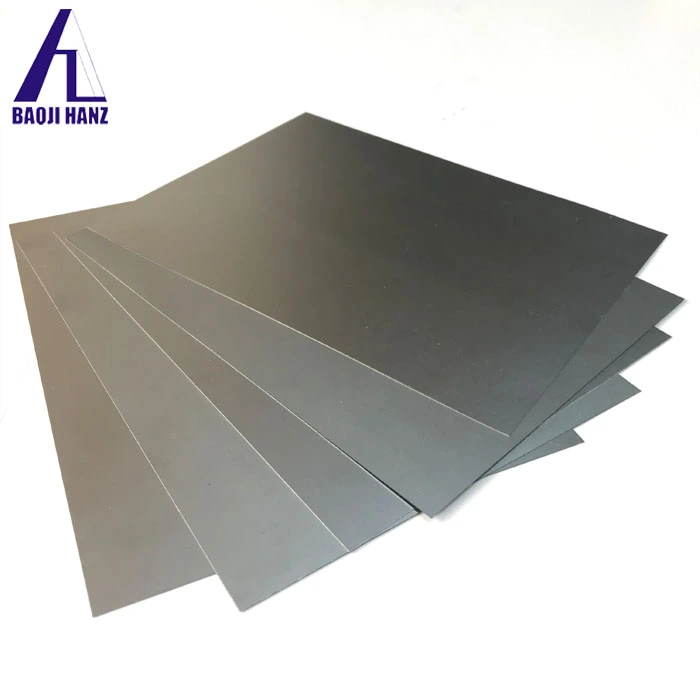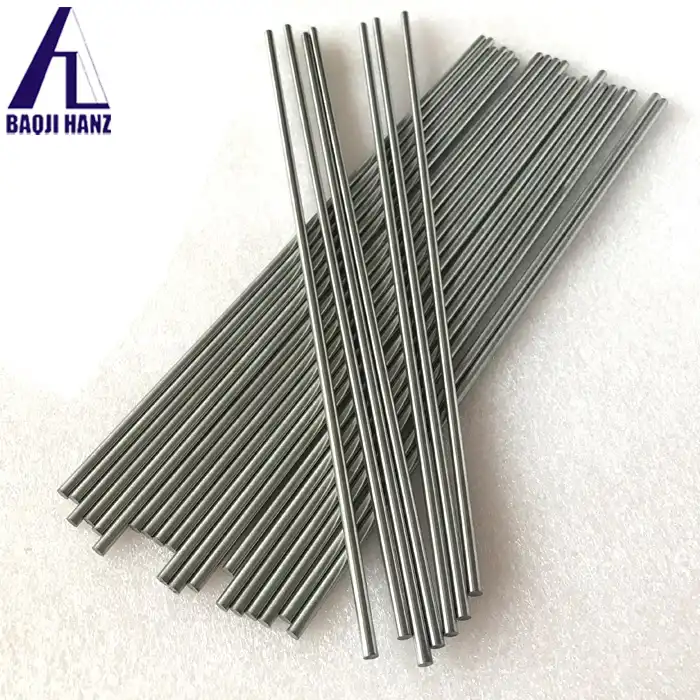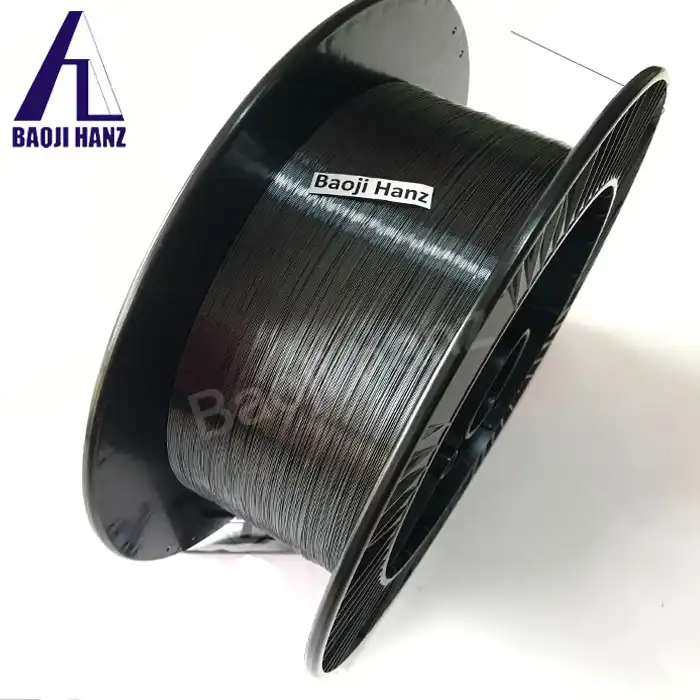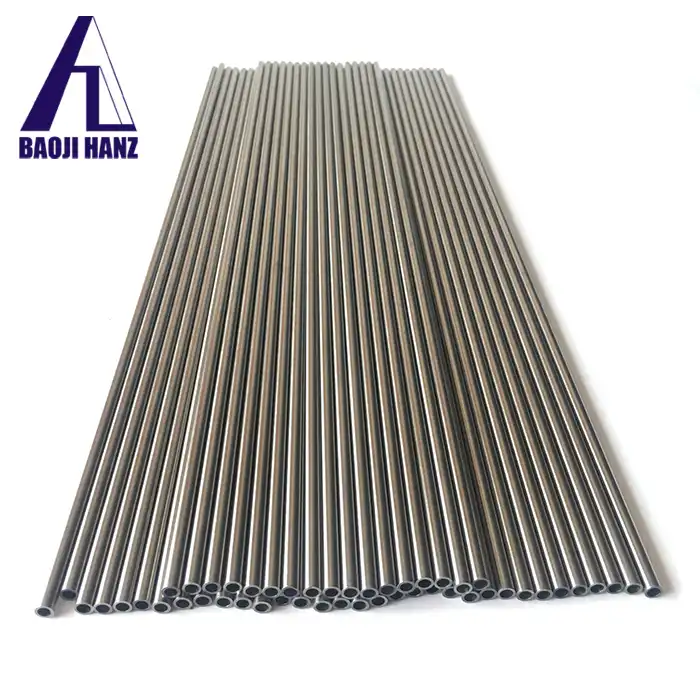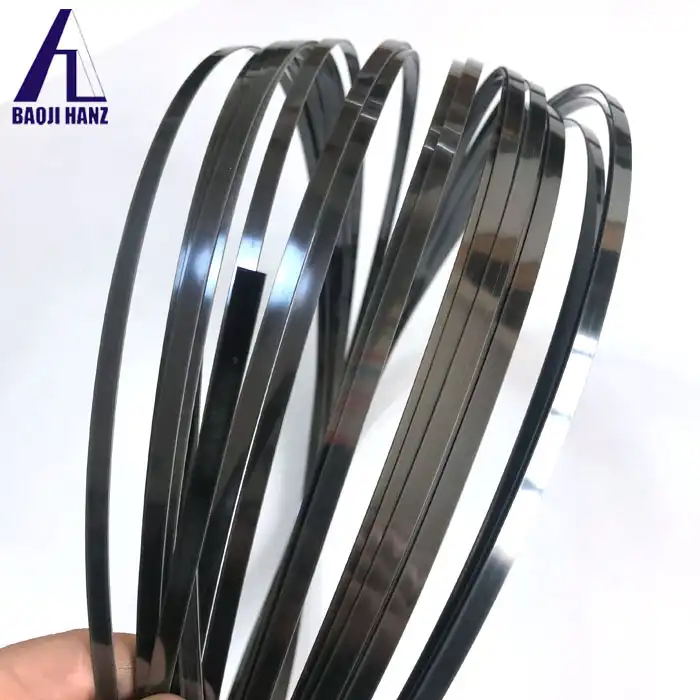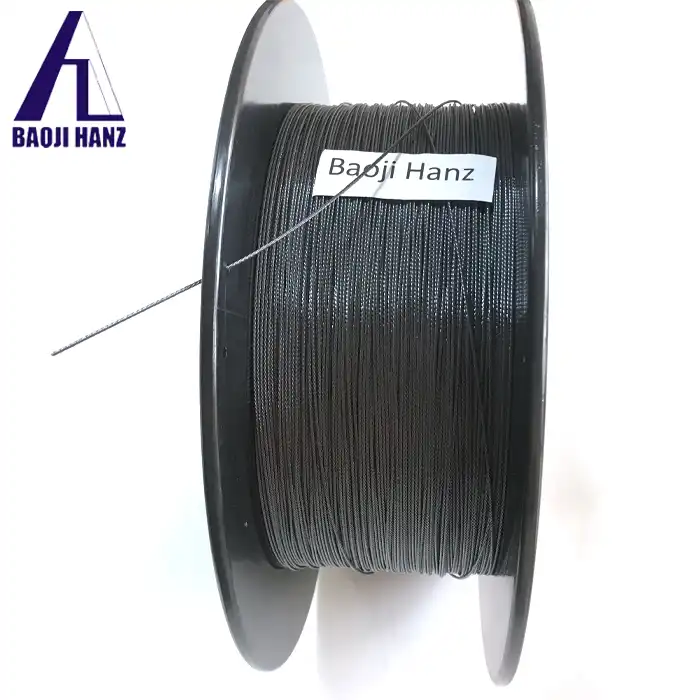What are the benefits of using Nitinol flat wire over other forms?
2025-01-23 20:41:48
Nitinol, a remarkable shape memory alloy, has revolutionized various industries with its unique properties. Among its different forms, Shape memory nitinol flat wire stands out as a versatile and advantageous option. This blog post delves into the benefits of using Nitinol flat wire compared to other forms, exploring its applications, characteristics, and advantages. We'll examine how this innovative material's flat wire form enhances its performance in medical devices, aerospace components, and consumer products. By understanding the distinct advantages of Nitinol flat wire, engineers and designers can make informed decisions about incorporating this exceptional material into their projects, potentially leading to groundbreaking advancements in their respective fields.
Superior Properties of Nitinol Flat Wire
Enhanced Shape Memory Characteristics
Shape memory nitinol flat wire exhibits exceptional shape memory properties, surpassing other forms of Nitinol. The flat geometry allows for more precise control over the shape memory effect, enabling intricate and complex transformations. This enhanced shape memory characteristic makes Nitinol flat wire ideal for applications requiring precise and repeatable shape changes, such as in medical stents or actuators in aerospace systems.
Improved Superelasticity
The flat wire configuration of Nitinol enhances its superelastic properties, allowing for greater flexibility and resilience. This improved superelasticity enables Nitinol flat wire to withstand larger deformations without permanent damage, making it suitable for applications that require repeated bending or flexing. The enhanced superelasticity also contributes to better fatigue resistance, extending the lifespan of components made from Nitinol flat wire.
Optimized Thermal and Electrical Conductivity
Nitinol flat wire demonstrates optimized thermal and electrical conductivity compared to other forms. The increased surface area-to-volume ratio of the flat wire geometry facilitates more efficient heat transfer and electrical conduction. This property makes Nitinol flat wire an excellent choice for applications in thermal management systems or electrical components that require precise control over conductivity.
Design Advantages of Nitinol Flat Wire
Increased Surface Area
One of the primary design advantages of Nitinol flat wire is its increased surface area compared to round wire or other forms. This expanded surface area allows for better interaction with surrounding materials or environments, enhancing the effectiveness of Nitinol in various applications. For instance, in medical devices, the increased surface area of Nitinol flat wire can improve drug delivery or promote better tissue integration in implants.
Compact Profile
Nitinol flat wire offers a more compact profile than other forms, making it ideal for space-constrained applications. This slim profile allows for the integration of Nitinol components in tight spaces without compromising functionality. The compact nature of Nitinol flat wire is particularly advantageous in miniaturized devices, such as minimally invasive surgical instruments or small-scale actuators in robotics.
Enhanced Flexibility in Design
The Shape memory nitinol flat wire configuration of Nitinol provides designers with enhanced flexibility in creating complex shapes and structures. The ability to easily bend and form Nitinol flat wire into intricate patterns opens up new possibilities for innovative designs. This flexibility allows for the creation of custom-shaped components that can conform to specific geometries or perform unique functions, expanding the potential applications of Nitinol across various industries.
Manufacturing and Processing Benefits
Improved Machinability
Nitinol flat wire offers significantly improved machinability compared to other forms of Nitinol. Its flat geometry provides a stable and even surface, facilitating cutting, drilling, and various machining operations. This stability leads to more precise and consistent manufacturing processes, allowing for greater accuracy in producing complex shapes and components. As a result, the enhanced machinability of Nitinol flat wire enables the creation of intricate features and fine details in components, expanding the range of applications across different industries. This capability not only enhances product quality but also opens new avenues for innovation, particularly in medical devices and specialized engineering applications where precision and reliability are paramount. Overall, Nitinol flat wire represents a versatile choice for high-performance manufacturing needs.
Efficient Heat Treatment
The flat wire configuration of Nitinol significantly enhances the efficiency of heat treatment processes. With its increased surface area, the Shape memory nitinol flat wire design allows for better heat distribution and more uniform temperature control during annealing and shape-setting procedures. This improved efficiency in heat treatment leads to more consistent shape memory and superelastic properties throughout the material. As a result, Nitinol flat wire exhibits enhanced overall performance and reliability in various applications. These attributes are particularly beneficial in fields like medical devices and robotics, where precise control over material properties is essential. By ensuring uniform heat treatment, manufacturers can produce high-quality Nitinol components that meet stringent performance standards and enhance their usability across diverse industries.
Enhanced Welding Capabilities
Nitinol flat wire demonstrates enhanced welding capabilities compared to other forms. The flat surface provides a larger contact area for welding, resulting in stronger and more reliable joints. This improved weldability enables the creation of complex assemblies and structures using Nitinol flat wire, expanding its potential applications in industries such as aerospace and automotive manufacturing.
Conclusion
Shape memory nitinol flat wire offers numerous benefits over other forms, including enhanced shape memory characteristics, improved superelasticity, and optimized conductivity. Its design advantages, such as increased surface area and compact profile, make it an ideal choice for various applications. The manufacturing and processing benefits further highlight the versatility of Nitinol flat wire, making it a valuable material for innovative designs across multiple industries. If you want to get more information about this product, you can contact us at: baojihanz-niti@hanztech.cn.
h2>Properties and Characteristics of Shape Memory Nitinol Foil Superelasticity and Shape Memory Effect
Shape memory nitinol foil exhibits two extraordinary properties that set it apart from conventional materials: superelasticity and the shape memory effect. Superelasticity allows the foil to undergo substantial deformation without permanent damage, returning to its original shape upon unloading. This property is particularly useful in applications requiring flexibility and resilience. The shape memory effect enables the foil to "remember" and return to a predetermined shape when heated above its transformation temperature. This unique characteristic opens up a world of possibilities for creating smart, responsive structures and devices.
Temperature-Dependent Behavior
The behavior of theShape memory nitinol foil is intricately linked to temperature. At lower temperatures, the material exists in a martensite phase, which is easily deformable. As the temperature increases, it transitions to the austenite phase, triggering the shape memory effect. This temperature-dependent behavior allows for precise control over the material's properties, making it ideal for applications in thermal management and temperature-sensitive devices. The ability to fine-tune the transformation temperature through composition adjustments further enhances the versatility of the product.
Mechanical and Physical Properties
Shape memory nitinol foil boasts an impressive array of mechanical and physical properties. Its high strength-to-weight ratio makes it an excellent choice for lightweight yet durable components. The material's corrosion resistance surpasses that of many conventional alloys, ensuring longevity in harsh environments. Additionally, the ptoduct exhibits good biocompatibility, making it suitable for medical implants and devices. Its electrical and thermal conductivity properties also contribute to its utility in various applications, from sensors to actuators.
Manufacturing Processes of Shape Memory Nitinol Foil
Alloy Composition and Melting
The production of shape memory nitinol foil begins with careful control of the alloy composition. Precise amounts of nickel and titanium are combined to achieve the desired properties. The melting process typically involves vacuum induction melting or vacuum arc remelting to ensure high purity and homogeneity of the alloy. These advanced melting techniques are crucial for maintaining the consistency and quality of the final product, as even small variations in composition can significantly affect the foil's performance.
Casting and Hot Working
After melting, the nitinol alloy is cast into ingots or billets. These are then subjected to hot working processes such as forging or hot rolling to break down the as-cast structure and improve the material's properties. Hot working helps to refine the grain structure and enhance the mechanical properties of the alloy. The temperature and deformation parameters during this stage are carefully controlled to ensure optimal performance of the product.
Cold Rolling and Heat Treatment
The hot-worked material undergoes cold rolling to achieve the desired foil thickness. This process involves multiple passes through precision rollers, gradually reducing the thickness while increasing the length. Cold rolling also introduces work hardening, which affects the material's properties. Subsequent heat treatment is crucial to impart the shape memory and superelastic properties to the foil. This heat treatment, often referred to as "shape setting," involves heating the foil to a specific temperature and holding it in the desired shape before cooling. The precise temperature and duration of this process are tailored to achieve the optimal shape memory behavior for the intended application.
Applications of Shape Memory Nitinol Foil
Medical Devices and Implants
Shape memory nitinol foil has found extensive use in the medical field, revolutionizing the design of minimally invasive devices and implants. In cardiovascular applications, nitinol foil is used to create self-expanding stents that can be compressed for insertion and then expand to their predetermined shape once in place. This property allows for less invasive procedures and reduced trauma to patients. Orthodontic archwires made from nitinol foil provide constant, gentle force for tooth alignment, improving comfort and reducing treatment time. In neurosurgery, shape memory nitinol foil is utilized in aneurysm clips and guidewires, offering enhanced maneuverability and precision during delicate procedures.
Aerospace and Automotive Industries
The unique properties of the Shape memory nitinol foilmake it an invaluable material in aerospace and automotive applications. In aircraft, nitinol foil is used in variable geometry chevrons for jet engines, which can adapt their shape to optimize performance and reduce noise during different flight phases. The automotive industry employs nitinol foil in actuators for climate control systems and in adaptive damping systems for improved ride comfort. The material's high fatigue resistance and ability to withstand extreme temperatures make it ideal for these demanding applications. Additionally, shape memory nitinol foil is explored for use in morphing aircraft structures and self-healing automotive components, pushing the boundaries of what's possible in vehicle design and performance.
Consumer Electronics and Robotics
Shape memory nitinol foil has made significant inroads into consumer electronics and robotics, enabling the creation of more compact and responsive devices. In smartphones and tablets, nitinol foil is used in haptic feedback mechanisms, providing tactile sensations that enhance user experience. The material's superelasticity is exploited in flexible antennas and connectors, allowing for more durable and bendable electronic devices. In robotics, shape memory nitinol foil actuators offer a lightweight alternative to traditional motors, enabling the development of more agile and energy-efficient robots. Soft robotics, in particular, benefits from the material's ability to change shape in response to electrical stimuli, opening up new possibilities for adaptive and biomimetic designs.
Conclusion
Shape memory nitinol foil has emerged as a versatile and innovative material with a wide range of applications across various industries. Its unique properties of shape memory and superelasticity have enabled the development of groundbreaking technologies in medicine, aerospace, automotive, and consumer electronics. As research continues to uncover new possibilities for this remarkable material, we can expect to see even more exciting applications in the future, pushing the boundaries of what's possible in engineering and design. If you want to get more information about this product, you can contact us at: baojihanz-niti@hanztech.cn.
Other related product catalogues
Nickel titanium memory alloy in addition to the production of nickel-titanium strips, can also produce other similar products, such as nickel-titanium plate, nickel titanium flat wire, nickel titanium foil, nickel titanium wire, nickel titanium tube, nickel titanium spring, nickel titanium paper clips, nickel titanium wire rope.
|
|
|
|
|
|
|
|
References
1. Johnson, A. D., & Pelton, A. R. (2018). Shape Memory Alloys: Properties and Applications. Advanced Materials & Processes, 176(5), 42-46.
2. Mohd Jani, J., Leary, M., Subic, A., & Gibson, M. A. (2014). A review of shape memory alloy research, applications and opportunities. Materials & Design, 56, 1078-1113.
3. Duerig, T., Pelton, A., & Stöckel, D. (1999). An overview of nitinol medical applications. Materials Science and Engineering: A, 273-275, 149-160.
4. Otsuka, K., & Wayman, C. M. (Eds.). (1999). Shape memory materials. Cambridge university press.
5. Lagoudas, D. C. (Ed.). (2008). Shape memory alloys: modeling and engineering applications. Springer Science & Business Media.
6. Miyazaki, S., Fu, Y. Q., & Huang, W. M. (Eds.). (2009). Thin film shape memory alloys: fundamentals and device applications. Cambridge University Press.
